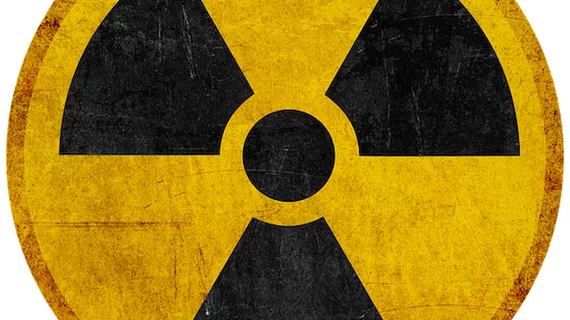New CT technique slashes radiation exposure while retaining image quality
Researchers from University College London have created a computed tomography technique that can produce high-quality images with much less required radiation.
The approach, described Thursday in Physical Review Applied, splits a full x-ray beam into thin "beamlets." It was tested on a small sample inside of a micro CT machine, but can likely be adapted for medical modalities and reduce radiation exposure for millions of exams.
Charlotte Hagen, PhD, with UCL Medical Physics & Biomedical Engineering, says limiting radiation has been a “long-sought goal” and noted this method opens “new possibilities for medical research.”
Conventional CT scanning requires an x-ray beam to rotate around a patient, but this new “cycloidal” approach combines rotation with a simultaneous backward and forwards motion, the authors described in the July 23 study.
According to Hagen and colleagues, the beamlets allow the x-rays to more precisely locate where the information is coming from.
“This new method fixes two problems. It can be used to reduce the dose, but if deployed at the same dose it can increase the resolution of the image,” senior author Sandro Olivio, PhD, added in a statement. "This means that the sharpness of the image can be easily adjusted using masks with different-sized apertures, allowing greater flexibility and freeing the resolution from the constraints of the scanner's hardware."
New study shows dose reduction degrades quality
A new study published Wednesday in Academic Radiology conducted a similar experiment, testing the impact of dose reduction on overall imaging quality. For this research, Swedish authors analyzed chest tomosynthesis exams and performed subsequent scans using simulated dose reduction levels.
Maral Mirzai, MSc, with the Sahlgrenska Academy at the University of Gothenburg in Sweden, and colleagues found that even small reductions led to lower quality images, especially when scanning portions of the lung.
And while CTS requires significantly less radiation exposure than CT exams to begin with, the findings still shed light on some of the difficulties in cutting patients’ required dosage.
“Even though previous studies have shown that the detectability of certain pathology in CTS seems to be unaffected by a 50% dose reduction from the original dose, the present study indicates that the overall perceived image quality is significantly degraded already at a radiation dose reduction of 30%,” the authors concluded. “It is therefore important to consider the clinical purpose of the CTS examinations before deciding on a permanent dose reduction.”

